What You Need to Know About Stock Markets Today
Thanks to electronic trading, the stock market is wilder than ever.

Editor's Note: We are re-featuring this guide to understanding the markets in light of the announcement on February 15 that the parent company of the New York Stock Exchange has agreed to merge with Deutsche Boerse. The merger would create the world’s largest operator of financial markets. Deutsche Boerse shareholders would own 60% of the merged company; NYSE Euronext shareholders, 40%. The text below has been updated since publication in the October 2010 issue of Kiplinger’s Personal Finance and the data is as of February 16, 2011.
1. There's no "there" there. You may picture a bustling exchange, where commerce begins and ends with the clang of a bell. But the "stock market" is an increasingly fragmented collection of more than 50 trading platforms, almost all electronic, with various protocols, rules and oversight.
2. The Big Board has shrunk. Images of the New York Stock Exchange still dominate business-news broadcasts. But, in fact, just 34% of the trading volume in stocks listed on the NYSE actually occurs on the exchange, down from 79% in 2005. Nasdaq, the first electronic exchange, accounts for about one-fifth of all U.S. stock trading. Newer exchanges, such as Direct Edge, in Jersey City, N.J., and BATS Exchange, in Kansas City, Mo., each account for about 10% of trading volume. About 30% of U.S. trading volume takes place off exchanges.

Sign up for Kiplinger’s Free E-Newsletters
Profit and prosper with the best of expert advice on investing, taxes, retirement, personal finance and more - straight to your e-mail.
Profit and prosper with the best of expert advice - straight to your e-mail.
3. ECNs are the new matchmakers. Electronic communication networks match up buy and sell orders at specified prices for institutional investors and brokers. This is where "after-hours" trading occurs. In addition, hundreds of broker-dealers execute trades internally, filling orders out of their own inventory.
4. Some trades are shrouded in mystery. You've heard of dark stars. Now there are dark pools -- private networks, sponsored by securities firms, where professionals trade without displaying price quotes to the public beforehand. Such dark pools account for more than 10% of stock-trading volume. The Securities and Exchange Commission wants to make dark pools more transparent to avoid a two-tier market that denies the public important pricing information.
5. You're sure to get the best price -- most days. According to an SEC rule, your trade is supposed to be routed to the platform with the best price at that moment. But when some venues aren't functioning as normal, exchanges may override the rule. The rule didn't apply during the "flash crash" of May 2010, when an intentional slowdown on the NYSE caused orders to be routed elsewhere, at lower prices.
6. There are fewer traffic cops. In the old days, specialists and market makers kept markets liquid by stepping up to buy -- or sell -- when a stampede of investors headed the other way. Now, not all exchanges require market makers. High-frequency traders, who program computers to profit from minute price discrepancies and can execute trades in milliseconds, were supposed to fill the void. But they don't have to, despite the fact that they often account for 50% or more of total trading volume.
7. Stoplights are coming. A pilot plan, recently extended until April, calls for stock-by-stock circuit breakers that would be applicable across all trading platforms. The plan currently applies to stocks in Standard & Poor's 500-stock index, the Russell 1000 index and certain exchange-traded funds, and calls for a trading pause if the share price changes by 10% within a five-minute period. Since December, market makers in exchange-listed securities have been required to maintain continuous buy and sell quotes within a certain range of a security's most recent share price, putting an end to occasionally ridiculous quotes, far removed from prevailing prices, that were never meant to be executed.

Anne Kates Smith brings Wall Street to Main Street, with decades of experience covering investments and personal finance for real people trying to navigate fast-changing markets, preserve financial security or plan for the future. She oversees the magazine's investing coverage, authors Kiplinger’s biannual stock-market outlooks and writes the "Your Mind and Your Money" column, a take on behavioral finance and how investors can get out of their own way. Smith began her journalism career as a writer and columnist for USA Today. Prior to joining Kiplinger, she was a senior editor at U.S. News & World Report and a contributing columnist for TheStreet. Smith is a graduate of St. John's College in Annapolis, Md., the third-oldest college in America.
-
 Why United Airlines Stock Is Flying Higher After Earnings
Why United Airlines Stock Is Flying Higher After EarningsUnited Airlines beat expectations for the first quarter and its stock is by soaring. Here's what you need to know.
By Joey Solitro Published
-
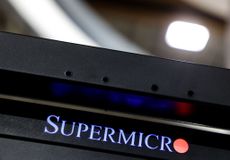 Super Micro Computer: Why This Hot Stock Could Hit $1,500
Super Micro Computer: Why This Hot Stock Could Hit $1,500Super Micro Computer's long-term AI revenue potential is underappreciated, Loop Capital says. Here's what you need to know.
By Joey Solitro Published
-
 Stock Market Today: Stocks Stabilize After Powell's Rate-Cut Warning
Stock Market Today: Stocks Stabilize After Powell's Rate-Cut WarningThe main indexes temporarily tumbled after Fed Chair Powell said interest rates could stay higher for longer.
By Karee Venema Published
-
 Stock Market Today: Stocks Reverse Lower as Treasury Yields Spike
Stock Market Today: Stocks Reverse Lower as Treasury Yields SpikeA good-news-is-bad-news retail sales report lowered rate-cut expectations and caused government bond yields to surge.
By Karee Venema Last updated
-
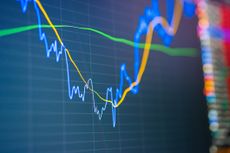 Stock Market Today: Nasdaq Leads as Magnificent 7 Stocks Rise
Stock Market Today: Nasdaq Leads as Magnificent 7 Stocks RiseStrength in several mega-cap tech and communication services stocks kept the main indexes higher Thursday.
By Karee Venema Published
-
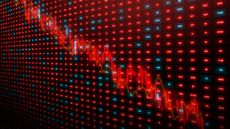 Stock Market Today: Stocks Tumble After a Hot Inflation Print
Stock Market Today: Stocks Tumble After a Hot Inflation PrintEquities retreated after inflation data called the Fed's rate-cut plans into question.
By Dan Burrows Published
-
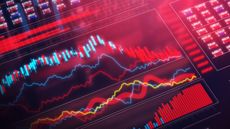 Stock Market Today: Stocks End Mixed Ahead of Key Inflation Reading
Stock Market Today: Stocks End Mixed Ahead of Key Inflation ReadingEquities struggled before tomorrow's big Consumer Price Index report.
By Dan Burrows Published
-
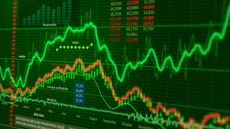 Stock Market Today: Stocks Closed Mixed in Choppy Trading
Stock Market Today: Stocks Closed Mixed in Choppy TradingVolatility returned as market participants adjusted their expectations for rate cuts.
By Dan Burrows Published
-
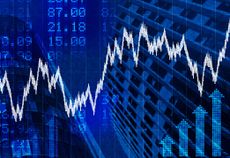 Stock Market Today: Stocks Rally After Blowout Jobs Report
Stock Market Today: Stocks Rally After Blowout Jobs ReportStocks soared into the weekend as investors brushed off strong payrolls data and lowered rate-cut expectations.
By Dan Burrows Published
-
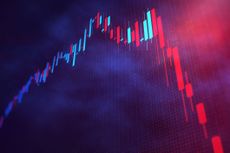 Stock Market Today: Stocks Swing Lower as March Jobs Report Looms
Stock Market Today: Stocks Swing Lower as March Jobs Report LoomsThe main indexes turned negative in mid-afternoon trading as all eyes turned to tomorrow morning's key employment update.
By Karee Venema Published